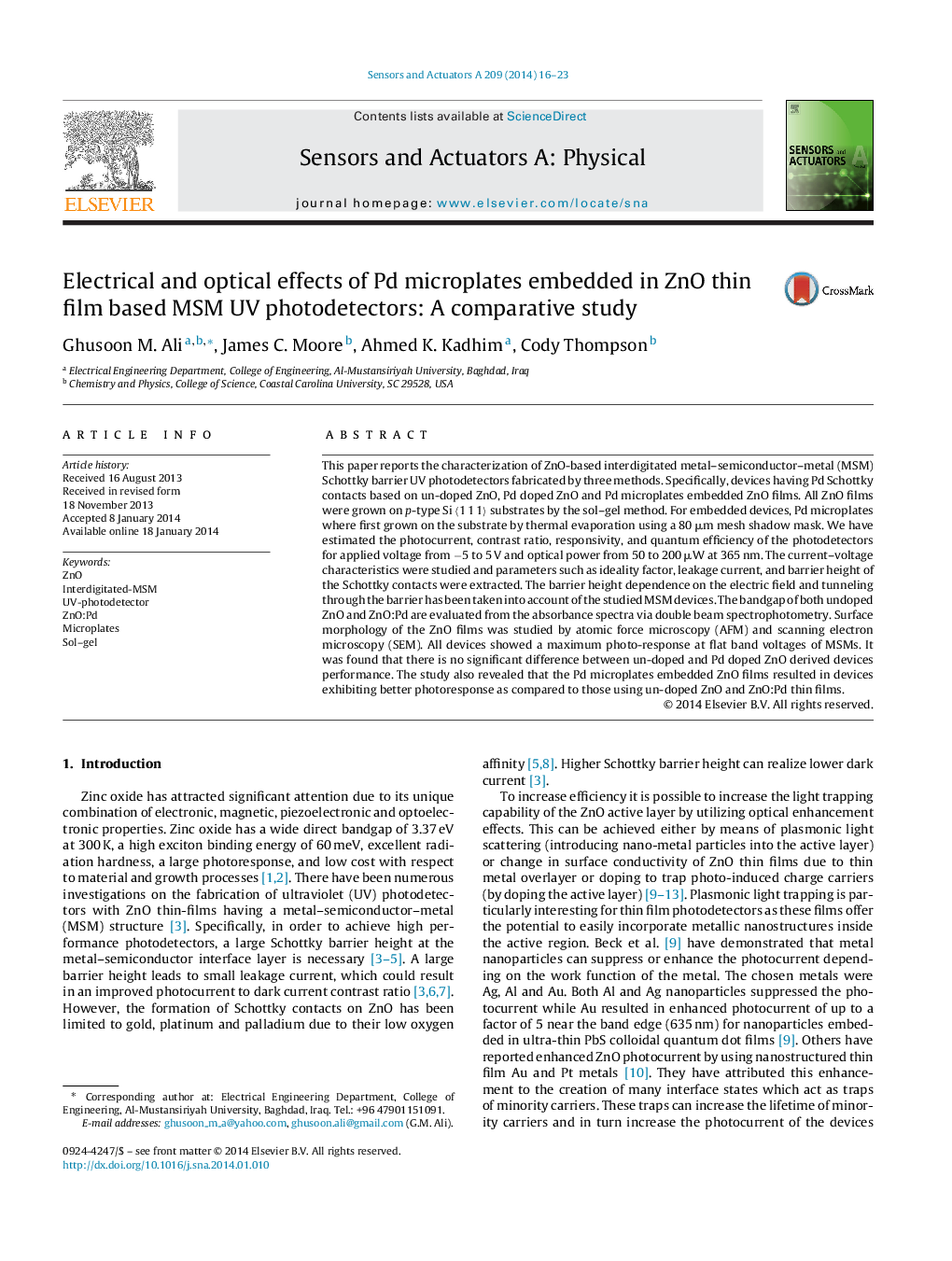| Article ID | Journal | Published Year | Pages | File Type |
|---|---|---|---|---|
| 737263 | Sensors and Actuators A: Physical | 2014 | 8 Pages |
•Pd/ZnO-based MSM UV photodetectors have been fabricated by three methods.•The devices based on un-doped ZnO, Pd doped ZnO and Pd microplates embedded ZnO films; the deposition of the thin-films active layers was carried out by using the sol–gel technique.•The barrier height dependence on the electric field and tunneling through the barrier has been taken into account of the studied MSM devices.•Devices based on Pd microplates embedded films exhibited lower dark current compared to other devices.•The studied photodetectors operate most effectively at a flat band bias condition.
This paper reports the characterization of ZnO-based interdigitated metal–semiconductor–metal (MSM) Schottky barrier UV photodetectors fabricated by three methods. Specifically, devices having Pd Schottky contacts based on un-doped ZnO, Pd doped ZnO and Pd microplates embedded ZnO films. All ZnO films were grown on p-type Si 〈1 1 1〉 substrates by the sol–gel method. For embedded devices, Pd microplates where first grown on the substrate by thermal evaporation using a 80 μm mesh shadow mask. We have estimated the photocurrent, contrast ratio, responsivity, and quantum efficiency of the photodetectors for applied voltage from −5 to 5 V and optical power from 50 to 200 μW at 365 nm. The current–voltage characteristics were studied and parameters such as ideality factor, leakage current, and barrier height of the Schottky contacts were extracted. The barrier height dependence on the electric field and tunneling through the barrier has been taken into account of the studied MSM devices. The bandgap of both undoped ZnO and ZnO:Pd are evaluated from the absorbance spectra via double beam spectrophotometry. Surface morphology of the ZnO films was studied by atomic force microscopy (AFM) and scanning electron microscopy (SEM). All devices showed a maximum photo-response at flat band voltages of MSMs. It was found that there is no significant difference between un-doped and Pd doped ZnO derived devices performance. The study also revealed that the Pd microplates embedded ZnO films resulted in devices exhibiting better photoresponse as compared to those using un-doped ZnO and ZnO:Pd thin films.
